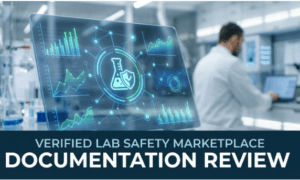Integrating video conferencing into a commercial AV setup can greatly enhance communication and collaboration in business environments. One of the core steps to achieving an effective setup is selecting essential AV components tailored to your specific needs. Businesses today rely heavily on seamless audio-visual communication to facilitate meetings across diverse locations.
By incorporating professional video conferencing solutions, companies can enhance productivity and streamline operations. A strategic plan for implementing these systems involves understanding the room layout and equipment requirements. Also, implementing commercial audio visual solutions ensures high-quality interactions and effective communication.
In order for the system to succeed, the focus must be on planning and implementing a sophisticated video conferencing system. This often includes evaluating the scalability and flexibility of chosen technologies. The right combination of equipment and careful integration into the existing infrastructure is essential to create an engaging and efficient communication tool.
Key Takeaways
- Effective video conferencing requires essential AV components.
- Proper planning enhances the implementation of video systems.
- Comprehensive solutions ensure seamless communication.
Essential AV Components for Effective Video Conferencing
Integrating the right audiovisual components is crucial for an effective video conferencing setup. A well-rounded system includes reliable cameras, microphones, speakerphones, and display configurations that enhance both video and audio quality to facilitate seamless communication.
Choosing the Right Cameras for Clarity
High-quality cameras are essential in ensuring clear and focused video during meetings. Options include HD cameras and PTZ (Pan-Tilt-Zoom) cameras that offer flexibility and precision. PTZ cameras can cover large conference rooms by adjusting angles and zoom levels, ensuring all participants are visible. A reliable conference camera provides sharp imagery and smooth streaming, reducing the risk of video lag and ensuring participants stay engaged.
Microphones and Speakerphones for Pristine Audio
Clear audio is crucial in video conferencing, making microphones and speakerphones vital components. A good AV system often includes omnidirectional microphones that capture voices from all directions, minimizing background noise. Speakerphones enhance audio output and deliver clear sound, promoting effective collaboration. Choosing microphones with noise-cancelling features ensures a crisper audio experience, allowing for uninterrupted discussions.
Displays and Dual Display Configurations
Displays play a key role in presenting information effectively. Incorporating large screens into a conference room AV system allows for clear visibility of participants and shared content. Dual display setups can be particularly beneficial, enabling simultaneous viewing of meeting participants and content, such as presentations or documents. This configuration ensures seamless collaboration and allows meeting attendees to engage more dynamically, improving overall communication efficiency.
Planning and Implementing Your Video Conferencing System
Integrating video conferencing into a commercial AV setup requires careful planning and execution. It involves understanding the unique needs of different meeting spaces and ensuring effective software integration for smooth collaboration.
Room Analysis for Different Meeting Spaces
Every type of meeting space, from a large conference room to a small huddle room, requires tailored AV solutions. A conference room typically needs advanced audio and visual equipment to accommodate more participants and larger presentations. This includes high-quality microphones, cameras, and large displays to ensure all attendees can clearly see and hear.
In contrast, a huddle room, often used for smaller meetings, benefits from more compact and versatile equipment. A single, high-quality camera and microphone system can be sufficient. Understanding room size, acoustics, and lighting conditions is crucial for choosing the right equipment and layout. Proper seating arrangements and minimizing obstructions can enhance the overall video meeting experience. Ensuring equipment compatibility and easy connectivity is necessary to facilitate seamless communication.
Software Integration for Seamless Collaboration
Choosing the right video conferencing software is pivotal for effective collaboration. Solutions like Zoom or Microsoft Teams offer various features tailored to businesses. They support functionalities like screen sharing, which is crucial for collaborating on projects during video meetings. Ensuring compatibility with existing systems and verifying necessary bandwidth and network requirements is essential.
Integrating the software with calendar applications enables easy scheduling and management of meetings. Training users on software usage and troubleshooting common issues ensures smooth operations. Regular updates and monitoring are necessary to maintain functionality and security. Effective software integration not only enhances productivity but also provides a reliable platform for constant communication.
Conclusion
Incorporating video conferencing solutions into commercial AV setups significantly enhances communication and collaboration. By integrating high-quality AV systems, businesses can create more engaging and effective meeting environments. Ensuring compatibility between existing equipment and new technologies is essential for seamless operation. Prioritizing ease of use and reliability can lead to more productive virtual meetings and overall improved business interactions.





























